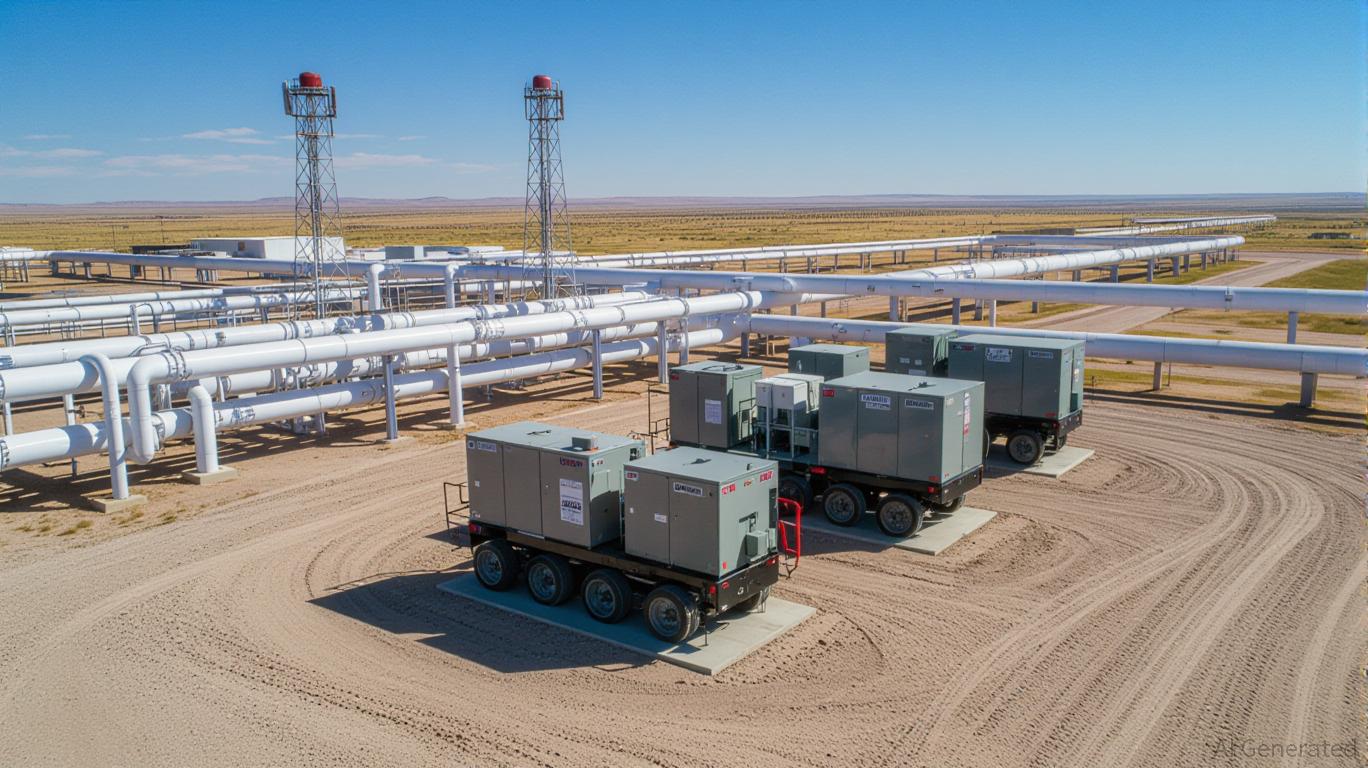
The energy transition is not a binary shift from fossil fuels to renewables but a nuanced evolution where natural gas serves as a critical bridge. For companies like Enerflex Ltd. (EFL), this dynamic creates a unique opportunity to align with both immediate energy security needs and long-term decarbonization goals. Enerflex’s 2025 capital allocation, debt management, and profitability drivers paint a compelling picture of a firm strategically positioned to capitalize on the natural gas boom while maintaining financial discipline.
Capital Allocation: Balancing Growth and Discipline
Enerflex’s 2025 capital expenditure plan of $120 million reflects a calculated approach to growth. Half of this budget—$60 million—is directed toward customer-supported initiatives, particularly in the U.S. contract compression business, which is central to its natural gas infrastructure strategy. This focus on the Permian Basin, a region experiencing robust natural gas production, ensures that Enerflex’s investments are demand-driven and aligned with industry trends.
The remaining $60 million is allocated to maintenance and property, plant, and equipment (PP&E), underscoring the company’s commitment to operational reliability. This balance between growth and maintenance is critical in an industry where asset longevity and efficiency are paramount. Enerflex’s North American contract compression fleet, projected to exceed 475,000 horsepower by year-end, exemplifies how targeted capital spending can scale capacity without overextending financial resources.
Debt Management: Strengthening the Balance Sheet
Enerflex’s debt reduction efforts in 2025 have been a cornerstone of its financial strategy. Net debt fell from $763 million in Q2 2024 to $608 million by Q2 2025, driven by strong adjusted EBITDA of $130 million and disciplined cash flow management. The company’s bank-adjusted net debt-to-EBITDA ratio improved from 2.2x to 1.3x, a metric that not only satisfies creditors but also provides flexibility for future investments.
A key enabler of this progress is the extension of Enerflex’s syndicated secured revolving credit facility to July 2028, ensuring liquidity for growth and debt servicing. Additionally, the company’s $1.5 billion contract backlog in its Energy Infrastructure (EI) product line provides a stable revenue stream, reducing reliance on external financing. This combination of proactive debt reduction and long-term contract visibility positions Enerflex to navigate market volatility with resilience.
Long-Term Profitability: Leveraging Recurring Revenue and Market Fundamentals
Enerflex’s profitability is anchored in its high-visibility backlog and recurring revenue streams. The EI and After-Market Services (AMS) product lines are expected to account for 65% of gross margin before depreciation and amortization in 2025, a testament to the durability of its business model. The EI backlog alone, valued at $1.5 billion, ensures a steady pipeline of projects, while the AMS segment benefits from the cyclical nature of equipment maintenance and upgrades.
The U.S. contract compression business further bolsters this model. With a gross margin of 74% in Q2 2025 and a fleet utilization rate of 94%, this segment is a cash flow engine. Enerflex’s strategic investments in expanding its fleet to 475,000 horsepower by year-end are poised to capitalize on the Permian Basin’s natural gas production surge, a trend that aligns with global energy security priorities.
Investment Thesis: A Case for Value Creation
Enerflex’s strategic alignment with the energy transition is evident in its dual focus on natural gas infrastructure and shareholder returns. The company’s 2025 capital allocation plan prioritizes growth in high-demand sectors while maintaining a disciplined approach to debt. Shareholder returns, including $18 million in Q2 2025 through dividends and buybacks, further enhance value creation.
For investors, Enerflex represents a compelling case study in how traditional energy firms can adapt to a transitioning market. Its ability to generate free cash flow, reduce leverage, and invest in scalable infrastructure positions it to outperform peers in a sector where capital efficiency and operational expertise are critical.
Risks and Considerations
While Enerflex’s strategy is robust, investors should remain mindful of macroeconomic risks, including interest rate volatility and regulatory shifts in the energy sector. Additionally, the company’s reliance on North American markets exposes it to regional demand fluctuations. However, Enerflex’s diversified backlog and extended credit facilities mitigate these risks, providing a buffer against short-term headwinds.
Conclusion: A Strategic Play in the Energy Transition
Enerflex’s 2025 performance underscores its ability to navigate the complexities of the energy transition while delivering value to stakeholders. By balancing growth investments with debt reduction, leveraging recurring revenue streams, and aligning with the natural gas boom, Enerflex is well-positioned to thrive in a sector undergoing structural change. For investors seeking exposure to a company that bridges traditional energy and the future of infrastructure, Enerflex offers a compelling, data-driven opportunity.
